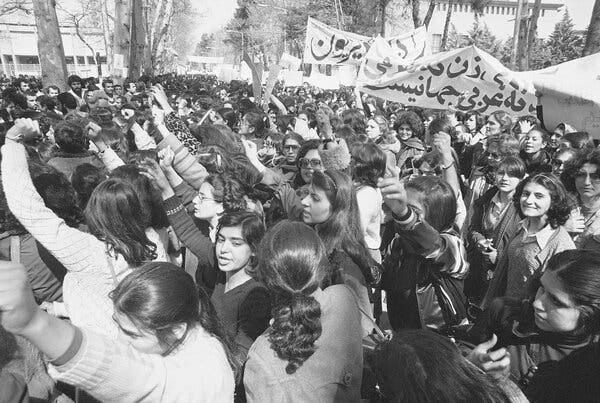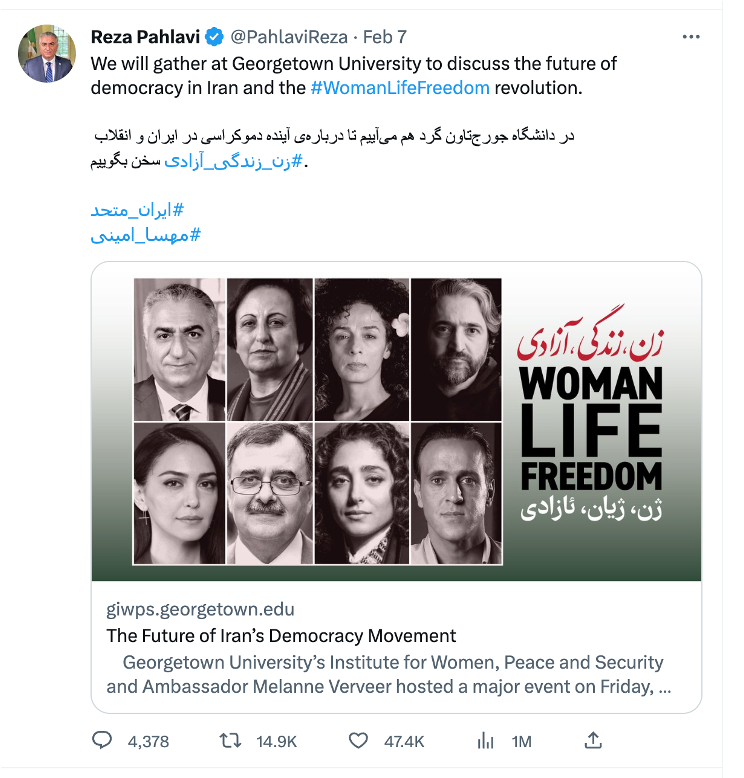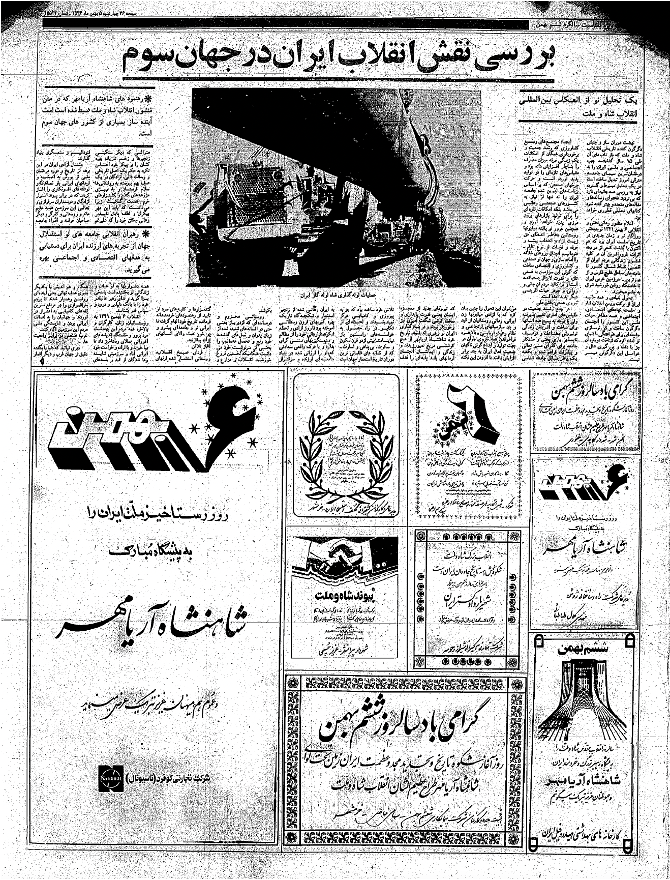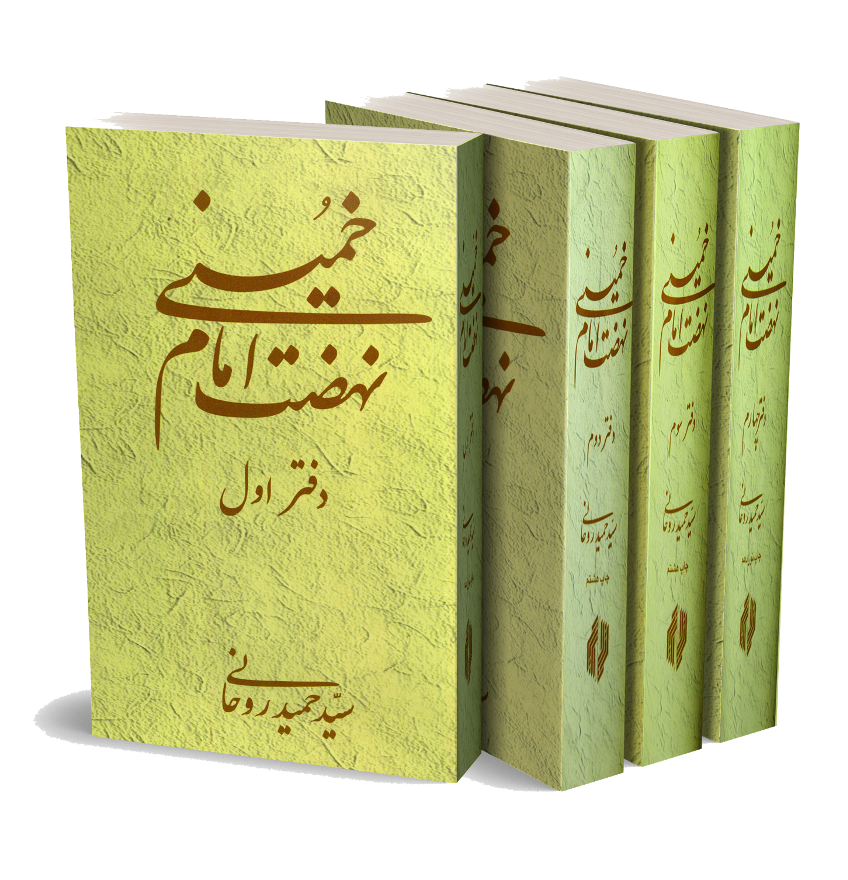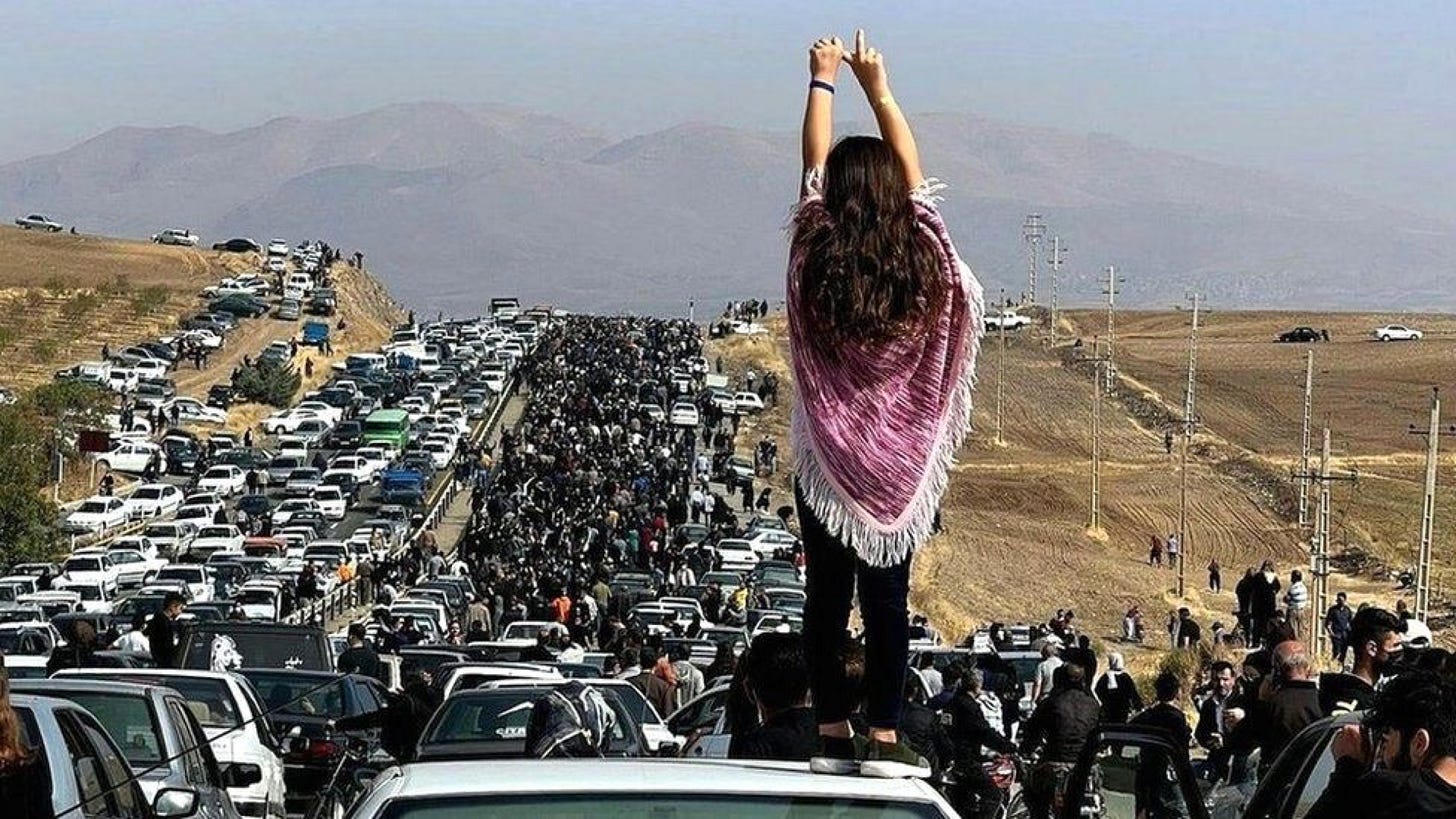On the Power and Peculiarity of Revolution in Iran
In early Feb. 2023, the son of the deposed Shah of Iran and 7 others called for a meeting at Georgetown University on Feb. 11, the anniversary day of the 1979 revolution, to “discuss the future of democracy in Iran and the Women, Life, Freedom revolution:”
It felt a bit strange to see someone whose life was shaped or at least deeply affected by a revolution insist on calling the protests in Iran a revolution. 45 years minus a couple of weeks before, his father, Mohammad Reza Shah was also celebrating the 15th anniversary of the revolution of the “Shah and the People” also known as the White Revolution.
Revolution here was meant to convey an orderly transformation of citizenship from the top down and had been in use in this way since 1963 when the Pahlavi monarchy adopted the word and some of its platforms from Marxist/Communist/Socialist ideologies and named its 6-point series of changes the White Revolution to contrast it with a Red one. (Two of the points were women’s suffrage and land reform.)
Ever careful to distinguish itself from the Reds, the Khomeini faction of the revolutionary coalition in the lead up to the revolution emphasized words like nehzat or jonbesh (movement) to talk about the mass mobilization it was heading. The word nehzat was associated with groups such as Nehzat-e Azadi (Freedom Movement, established in 1961 and with what came to be called the Constitutional Revolution (1905-1911) but in contemporary texts was often referred to as the Constitutional Movement (Nehzat-e Mashruteh). So when Seyyed Hamid Rouhani began writing the history of the movement he was observing from Najaf in 1972, he called it Nehzat-e Imam Khomeini. (After 1979, he wrote 3 more volumes but kept the title as was.)
On the other hand, as readers of this substack know, already in the early days of Feb. 1979 people had begun referring to what had happened in Iran as inqilab/revolution before the moment of its announced victory on Feb 11, 1979. In the columns in Iran’s daily newspaper that printed phone messages left by the readers we see the use of the word revolution to refer to what they deemed had already happened even though technically the monarchy and its government were still in power. Days before the end of street fighting and the declaration of victory, the question was not has the movement/the revolution succeeded but rather: What now? What is going to be the shape of things? In this sense, there is a contrast here with the ways in which revolution is being used today where it seems to be the goal itself rather than a powerful instrument to achieve fundamental transformation.
One of the first things that happened after the 1979 revolution was a battle over whose revolution was this? Who owned it? Out of this battle came two things: One was a rather decisive and violent victory of the Khomeini forces who very quickly adopted the word revolution as one that now belonged only to the newly created Islamic Republic. Everyone else was anti-revolutionary/ zedd-e inqilab. If for the Shah it was the revolution of the king and the people, for the Islamic republic, it was now the revolution of god and the people.
The second was a pervasive discourse of revolutionary regret that engulfed all who felt left out, disappointed or were kicked out of the Islamic Republic’s plans for Iran. Anyone who has a relative of a certain age in Iran has heard over and over again: The problem with 1979 was that we knew what we were against but never knew what we were for.
Of the intended or unintended consequences of the diaspora’s uses of revolution today has been amnesia about that oft-repeated lesson. The most chilling part of the Georgetown event was the statement put out by the actress Golshifteh Farahani and the soccer player Ali Karimi who in calling the events in Iran a revolution emphasized that “bringing up the type and form of government for the future of Iran is considered a type of betrayal to those who gave their lives or are imprisoned in Iran.” It is not the breezy use of betrayal that is noteworthy here but the forceful forgetting of the past that they demand: Sure you regret that in 1979 you knew what you were against but not for. Sure for 4 decades you say that was a mistake. But let’s forget that and start over again. Let’s not dwell on what we are for but unite in what we are against.
Emerging in Iran today is the powerful concept of tahhavol khahi or demand for transformation. This notion of both demand and transformation shifts the focus precisely towards what people want vs. what they reject, allows for thought and creativity, acknowledges the multiplicity of visions for the future, and implicitly or explicitly rejects the speed, power, and rupture that lies at the heart of “revolution.”
This idea of demanding transformation in Iran undergirds a range of ways in which people have been thinking through the events since September 2022, some rejecting revolution explicitly, some explicitly embracing it, and others avoiding it all together. One important example is the sociologist Saeed Madani’s One Hundred Years and One Hundred Days, his analysis of the “Mahsa uprising” from prison where he’s been since May 2022. There he gives a systematic scholarly argument against “revolution” for describing what has happened while celebrating the Mahsa uprising as a social movement and a point in a line of progression in Iran’s political culture that continues to evolve from the reform movement, to the green movement, to the protests of 2017 and 2019, and includes a history of civil society activism including workers unions, ethnic groups, and women’s activism. The Mahsa movement, he concludes, has elevated as never before “Iran’s democratic movement.”
In contrast to Madani’s rejection of revolution is Bahareh Hedayat’s embrace of it. (You can read the letter in English here.) Hedayat has been in prison since October and is well known for her work in the grassroots one million signature campaign (a crucial part of the history of Iranian feminism in the 21st century). Hedayat’s letter, also written from prison, insists on the inevitability of revolution for almost the same reasons Madani steers away from it: namely the need for violence to achieve one’s goals. She writes: revolutions are by nature dangerous and violent so to insist on non-violence is to negate the revolution as an inevitable outcome of where things are today. Hedayat is directly in conversation with the discourse of reform in Iran and thus her focus on revolution stands in binary opposition with eslahat or reforms, itself a concept with a particular history.
One of the people most identified with the reform period (whom Hedayat critiques) is Mir Husayn Mousavi, the husband of Zahra Rahnavard, who together have been under house arrest since 2009. On Feb. 3rd, Mousavi published his assessment and vision for the future called “To Save Iran.” There he threads the needle ever so carefully by calling for a referendum and a creation of a new constitution for Iran. But he calls it a “fundamental transformation” tahhavol-i bonyadin that will come about when people focus their attention on creating a new order. This focus, he writes, will crumble the old order eventually, whether it wants to or not. His avoidance of revolution to characterize this fundamental transformation cannot be accidental or ignored.
The fact is that we all want to hold on to that feeling in September 2022 when we were floored by the bravery of women and men, particularly of the Gen Zers that everyone had written off as too individualistic: The brave unveilings, the creative forms of asking for basic rights like non segregated eating areas, the intertwining of ethnic minority demands in Iran’s East and West with that of civil rights which has been historically majority bound, and the innovative and biting slogans shouted with abandon. The fact also is that the concept of revolution--putting aside cynical politics--has the kind of power that few things have: it is immense, it is rare, it is all encompassing. But with that power comes both amnesia about the past and a framing of the future in terms of success and failure.
It’s clear that revolution embodies a multiplicity of meanings today, from the rarest of rare social and political upheavals through mass mobilization to, ironically, the self definition of both shah and sheikh. Whether and how new layers of meaning are added to its history depends on the ongoing demands for transformation, this tahhavol khahi, that emanates from the people who have and continue to pay their freedom as a price for making those demands.


